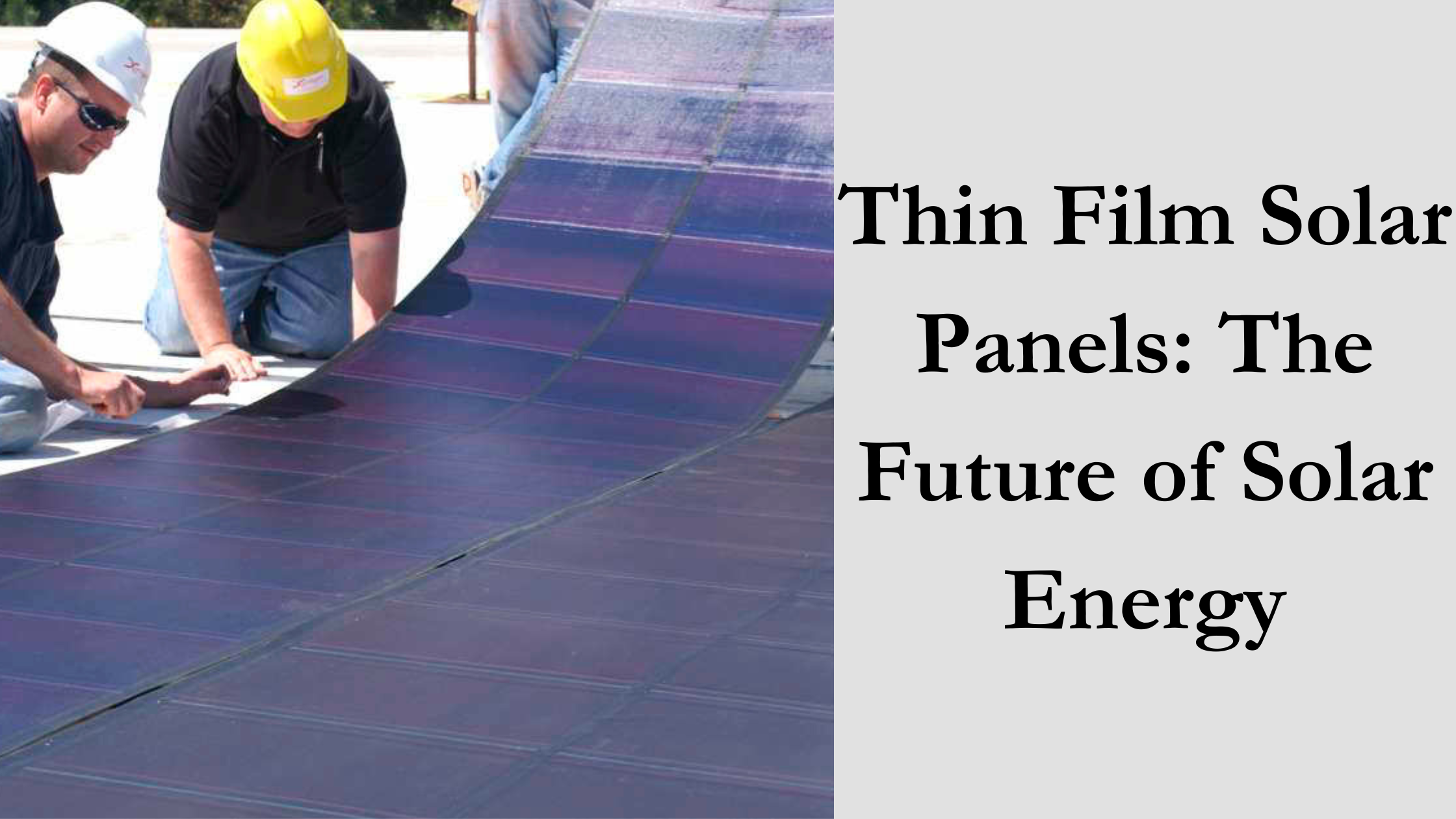Thin Film Solar Panels
Thin Film Solar Panels are disregarded in favor of their crystalline counterparts. They tend to be less effective and take up a lot more space, but they are also the most affordable and have the greatest potential for growth. They offer a number of advantages and are adaptable and simple to install. This article will give you the information you need to determine whether they are the best choice for your residential or business structure.
They are what?
Several thin layers of photovoltaic material are stacked on top of one another to make thin film solar cells. Since there are several different types of thin film solar cells, the material utilized for the PV layers determines how they differ, which is why we mention material rather than specifying. Following are some examples of the materials used:
- silicon amorphous
- Tellurium cadmium
- Metal indium gallium copper
- PV cells made of organic material
Thin film solar cells typically range in efficiency from 7% to 13%. Everything depends on the technique and materials that were employed in their construction. The interest in learning more about thin film solar cells has increased significantly since 2002, as has their popularity. This indicates that there has also been an increase in research and development. Future models should have efficiency rates of at least 10% to 16% as a result of this increase. We anticipate seeing even greater rates as time passes and research expands.
Benefits And Drawbacks Of Thin Film Cells
The Following Are Some Benefits Of Thin-Film Solar Cells:
- They are broadly adaptable to a variety of scenarios and building types since they may be built to be flexible.
- They can theoretically be produced for less money than crystalline solar cells because mass production is simple to accomplish.
- Their effectiveness is similarly affected by shading.
- Compared to crystalline structures, they often weigh less.
The Following Are Some Drawbacks Of Thin-Film Solar Cells:
- They take up a lot of room, making them unsuitable for home use.
- They will incur additional costs in the form of enhancers like cables or support structures because of their low space economy.
- They have a lesser warranty because of their lower lifespan.
Energy From Solar Cells Is Stored
People frequently wonder whether the amount of electricity the panels can produce will be affected by the sun’s visibility. People usually believe that without direct sunshine, the panels won’t perform at all. This is a myth, in actuality. The solar panels will still operate normally in cloudy conditions, but with decreased levels of efficiency. Of course, the thin-film solar panels’ inability to function at night is one thing that many people have been mistaken about.
This is where storage is quite helpful. If your solar panels are wired into the National Grid, you can use that electricity at night to keep your house running. Additionally, you have the option to incorporate energy storage devices like batteries into your solar cell system. They operate to conserve the energy that the cells have gathered, storing it for use at night or on days with little sunlight.
Solar battery systems are expensive; depending on size and capacity, they can cost anywhere from £3,000 to £12,000. They are, however, a great investment. Because not everyone wants to spend that much money, it’s possible that a less expensive option may soon be available on the market as a result of the extensive solar research being conducted worldwide.
Before Making A Thin Film Solar Cell Investment
Before you decide to invest, you shouldn’t base your decision just on the cost of thin film solar cells and the return on your investment through government programs. Here are some things to consider before making your decision to use solar energy to reduce your carbon footprint.
The placement of the panels must be considered. Will the system be situated in a region where the solar cells may obtain sunshine daily from at least 9am to 3pm? The position of solar panels installed on a roof has a significant impact on how much electricity can be produced there.
However, because thin film solar panels are far more flexible, it is simpler to install tracking devices that move the panels with the sun. You can significantly maximize your system’s performance with this.
Additionally, you should take the time to confirm that your roof can support solar panels because standard crystalline versions can be fairly hefty. Thin film solar panels are often significantly lighter, which might be advantageous to you if your roof cannot sustain their weight.
You must take into account the size of the solar panels because solar cells come in a variety of shapes and sizes. You’ll have a far better understanding of the panel size needed for your residence or place of business if you assess your energy requirements first.
Need More Information?
Have you recently developed a keen interest in solar energy? Visit our list if you wish to get in touch with some recommended, nearby installation businesses. Or you can just call us at the number listed at the top of this page and have a conversation.
Read More: The Future of Smart Speed Bump
Read More: High-Performance Concrete Build Business Case Value
